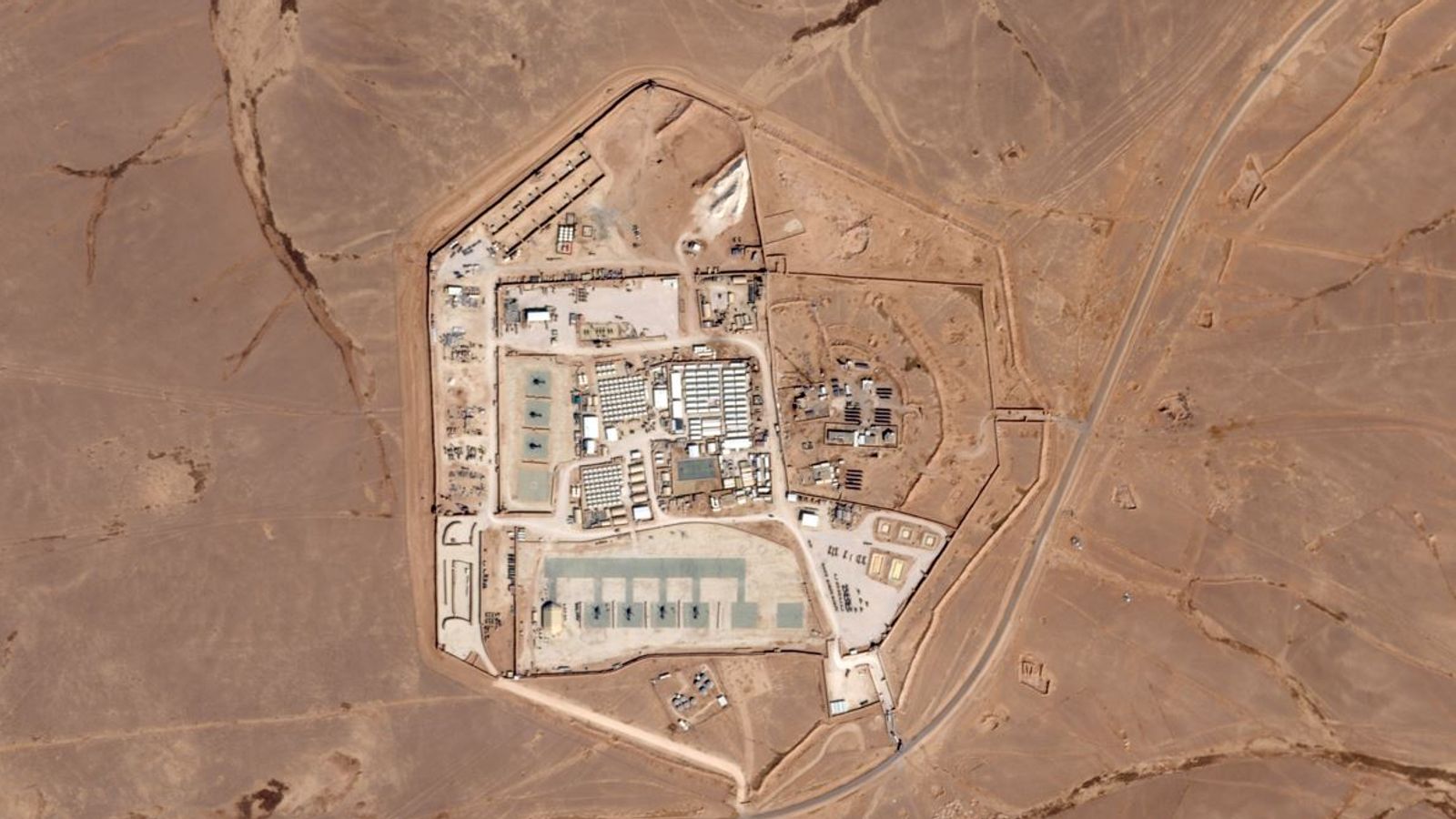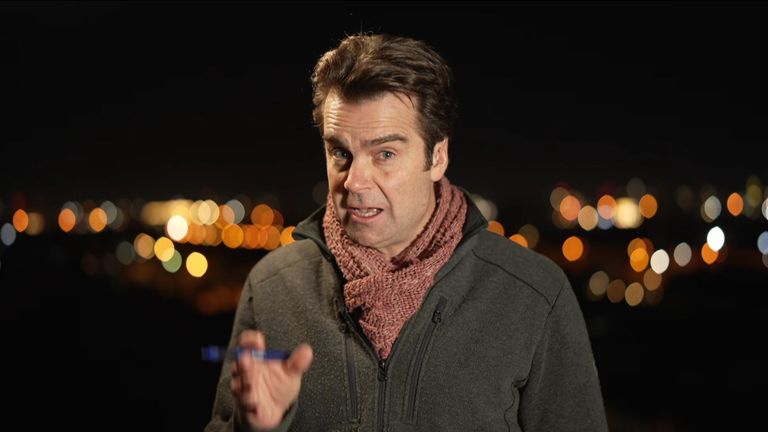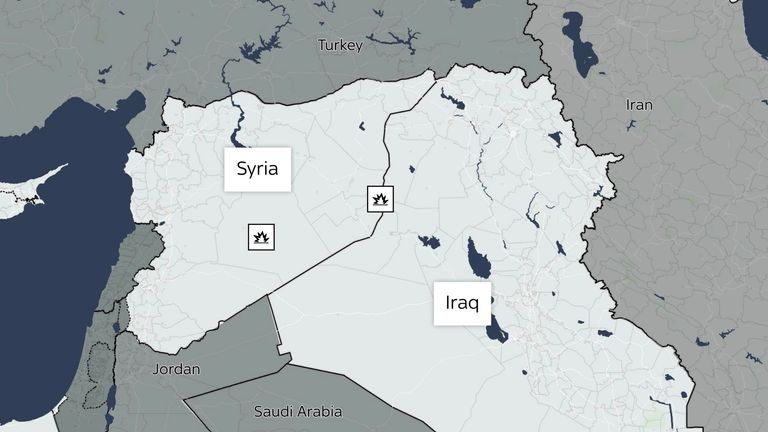A dangerous new phase in the Middle East conflict has begun with a major US military action targeting multiple locations in Syria and Iraq.
Seeking to both to punish and deter Iran and its Iraq-based proxies after an Iranian-backed militia killed three US service personnel in Jordan, manned and unmanned aircraft hit multiple locations with 125 specialised munitions, according US military’s central command.
This was a calculated response, not a knee-jerk reaction, coming six days after militant group Kata’ib Hezbollah’s drone strike on the US Tower 22 facility in Jordan.
The Americans took the time to choose its targets – and it had the time to consider the message it was sending with each of these strikes.
Middle East latest: US begins wave of airstrikes in Iraq and Syria
Foremost amongst these messages was a demonstration of American military strength.
Official and unofficial sources in Syria are reporting that facilities in the cities of Al-Mayadeen and Al-Bokamal in the eastern governate of Deir Er Zor have been hit.
Iraqi military sources have confirmed that the border city of Al-Qaim in Iraq’s Al Anbar province – along with other border areas – have been subjected to air strikes.
Explainer: What we know about the sites targeted in US strikes
US security sources say they hit seven individual facilities – four in Syria and three in Iraq.
Multiple casualties have been reported by Syrian state media while the UK-based monitor Syrian Observatory of Human Rights said 13 members of Iran-backed groups had been killed.
This action was widely expected, but by delaying their response, the Americans fed a collective feeling of anxiety in Iraq, with many wondering – and worrying about what the US would do.
Iraqis have gone to social media to report sightings of “intelligence-gathering” drones up in the sky. People have been choosing to stay at home and avoid public spaces for fear of an attack.
Yet this six-day wait has allowed senior militia members the opportunity to hide – or escape – and there have been multiple reports of well-known militants fleeing to neighbouring Iran.
The targets and the timing of this opening salvo was designed to meet – and balance – a complicated set of objectives.
Analysis: Sky News experts on why Biden ordered bombing raid
President Biden seeks to deter Iran without going to war with Iran.
The American leader needs to satisfy his hawkish critics in Washington – without inflaming public opinion in the Middle East.
He wants to prevent the loss of life of US service personnel without causing major loss of life in the region.
A direct confrontation with Iran would take the crisis in the Middle East in an entirely different and more precarious direction and it is highly significant that the US does not appear to have hit locations in Iran.
Yet this new American action in Syria and Iraq, which signals the beginning of a new US military campaign, may well have unintended – and far-reaching consequences.


